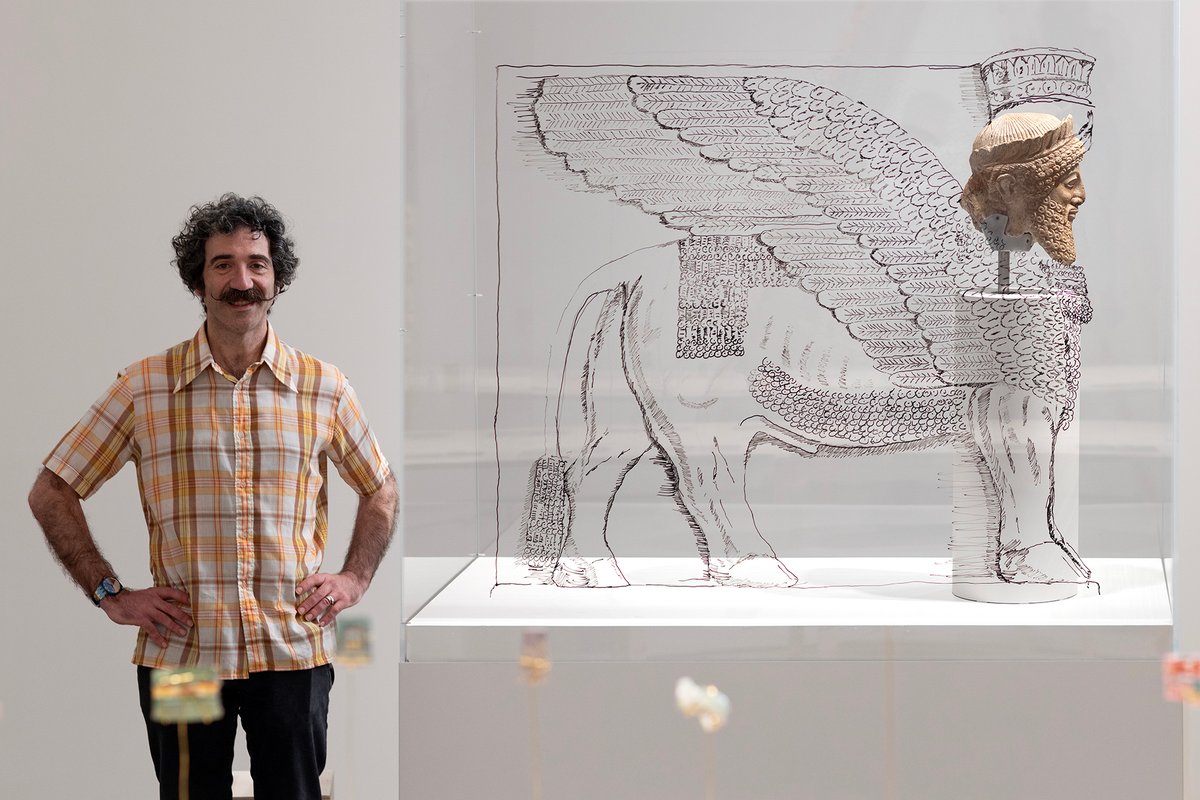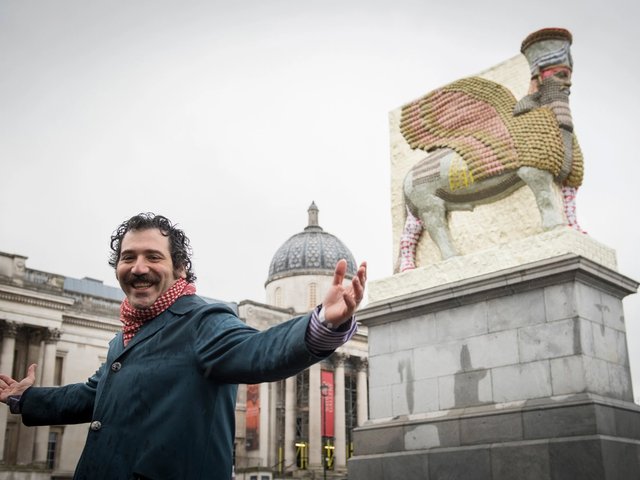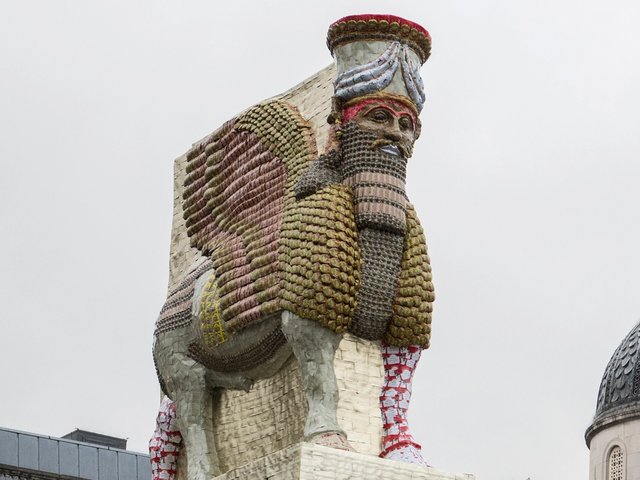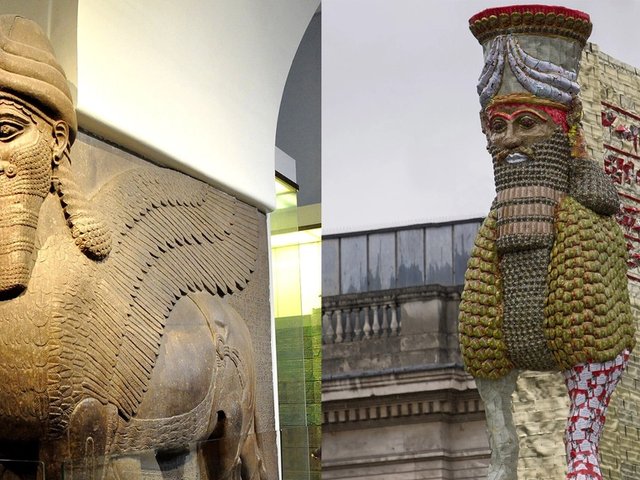At the opening of Allspice: Michael Rakowitz and Ancient Cultures in Athens, the Iraqi-American artist Michael Rakowitz stood on a podium, backlit by an illuminated Acropolis.
Half of the ancient Greek complex’s treasures are exhibited at the Acropolis Museum, where the exhibition is taking place, but many are missing—some controversially housed instead at the British Museum and other international institutions. Their absence evokes the damaged and looted Iraqi heritage Rakowitz so lovingly honours in his own work.
Speaking to the assembled crowd of art collectors, artists and other notables, Rakowitz said: “I feel at home here.”
Allspice is the first in a trilogy of exhibitions organised by the Hellenic Ministry of Culture, the Acropolis Museum, the Ephorate of Antiquities of Athens and the Athens based non-profit organisation Neon that is unfolding between 2025 and 2026. It also marks the first time that the Acropolis Museum has presented work by a living artist.

Installation view of Allspice | Michael Rakowitz & Ancient Cultures
Photo: Natalia Tsoukala. Courtesy Νeon, the Acropolis Museum and the artist
For the show, 13 objects from the University of Chicago’s Institute for the Study of Ancient Culture and one from the Thanos N. Zintilis Collection of Cypriot Antiquities have been brought together with 14 pieces by Rakowitz that bring to the fore ideas of lost heritage, memory and diasporic longings.
The exhibition includes selections from the artist’s ongoing series The invisible enemy should not exist, a project that aims to recreate each of the 7,000 artefacts from the National Museum of Iraq in Baghdad that were looted or destroyed during and after the US invasion. Rakowitz makes each object from this series with his team of studio assistants using materials such as cardboard, Middle Eastern food packaging, glue and museum labels.
One facet of this work featured in the exhibition are recreations, or what Rakowitz describes as “reappearances”, of reliefs from the Palace of Nimrud, which were destroyed by Isis in 2015. The reliefs, which depict guardian figures known as lamassu—winged creatures with human faces—have been reimagined by the artist in vibrant, colourful papier mache. Reliefs resembling black chasms displayed with archaeological captions summon the ghosts of objects excavated and removed by foreign powers in the 19th century as well as contemporary looting and destruction.
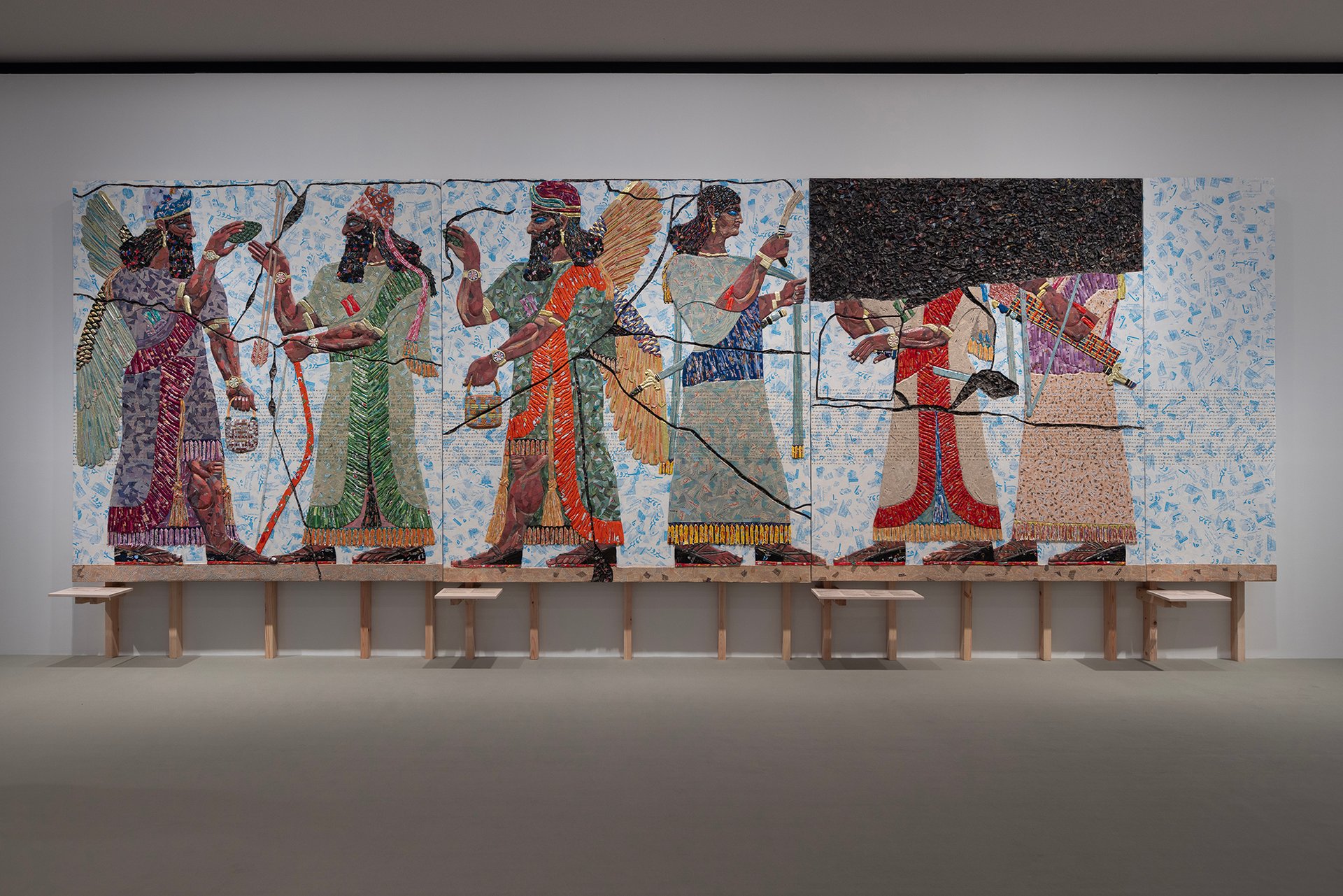
Installation view of panels from Michael Rakowitz’s The Invisible Enemy Should Not Exist (2019)
Centre national des art plastiques
“Rakowitz’s artistic language is highly personal yet has a universal reach as if, through his attempt to save Iraq’s cultural history, he is offering us a history of the world,” says Elina Kountouri, Neon’s director and a co-curator of the show.
“He metabolises wartime devastation in his work by returning to the objects themselves: whether lost, missing, or imperfect. He is making them whole again but not by ‘reconstructing’ them, a term that he emphatically resists.”
Rakowitz himself made the link between looted and damaged artefacts and the fate of contemporary communities, saying at opening: “You cannot reconstruct the lives that have been destroyed, maimed and interrupted alongside ravaged archaeological ruins.”
Rakowitz has spoken previously about the influence his autobiography—especially his mother’s Iraqi Jewish family—has had on his work. The exhibition’s title is inspired by the recipes Rakowitz collected from his mother and grandmother for Iraqi cuisine, and the show includes an installation with the same name.
A new commission by Neon, the work features recipes written by the artist’s mother collaged onto large white pillars. Allspice is a common ingredient in the recipes, serving “as a good substitute and preserves the flavour profile of the recipe,” Rakowitz said to the crowd. The theme of substitution, he adds, provides a metaphorical link to his broader practice.
“Substitute is derived from the Latin substituere, which comes from statuere, whose noun derivative is statua, or statue, which seems central to my work as a sculptor for the past two decades: making sculptures that are substitutions for other sculptures that have disappeared or been destroyed,” he said.
The Allspice installation is complemented by an earlier film—made in tribute to his merchant grandfather—that documents the artist’s opening of a date store and its transformation into a social space for the Middle Eastern diaspora.
Another new work, A Baghdadi Amba Dictionary, features jars of amba—pickled mango, an important condiment in Iraqi cuisine—inscribed with Iraqi terms and expressions passed down to him by his mother. The jars of amba—described by Kountouri as “vessels of diasporic tradition and memory”—were prepared by Rakowitz himself and will be served to patrons at the end of the exhibition.
Silent witnesses
The 14 historical artefacts on display are predominantly standing figures or fragments of figures, among them a headless female figure with clasped hands from Sin Temple IX (2700-2500 BC) in Iraq.
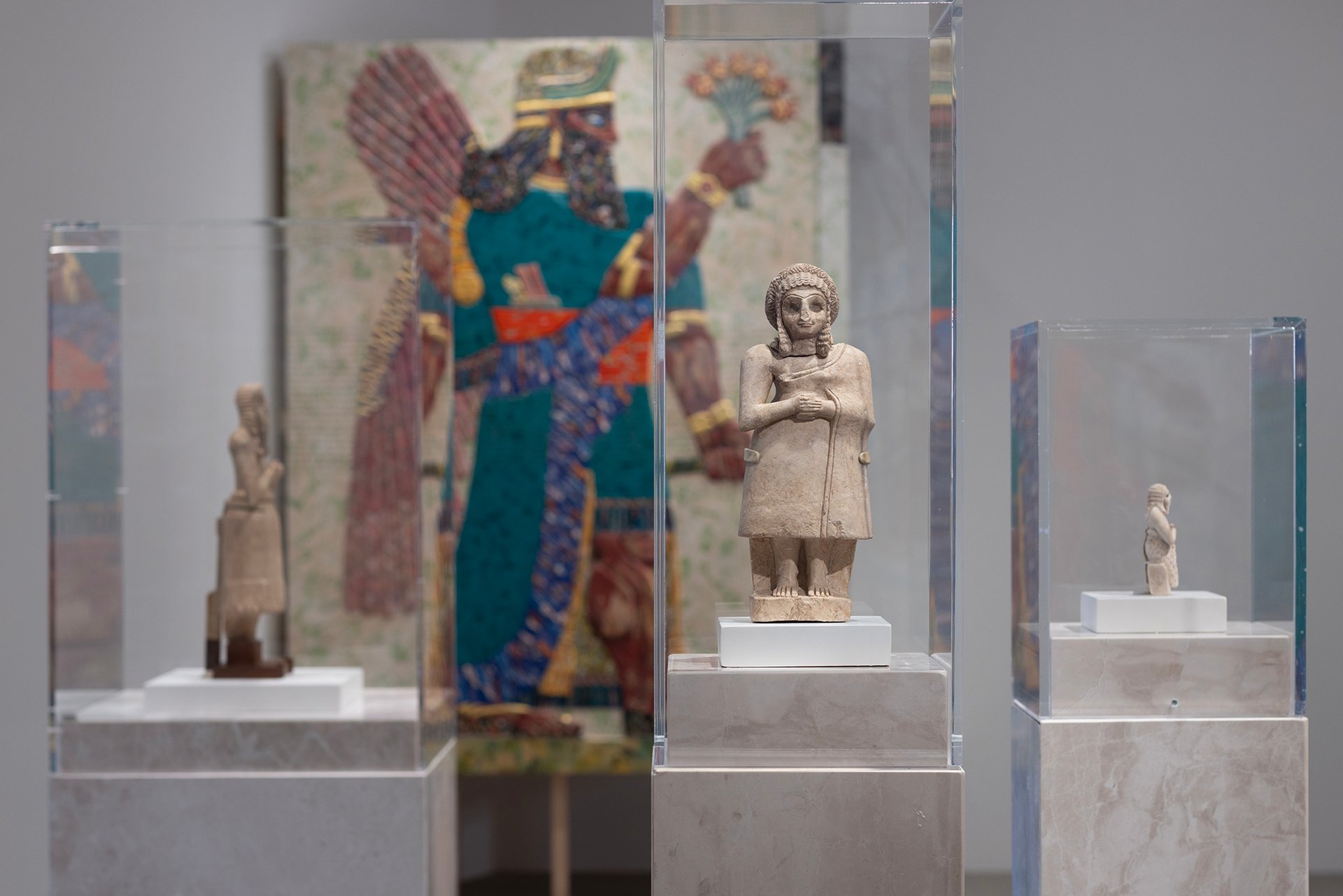
An installation view of Allspice | Michael Rakowitz & Ancient Cultures featuring three sculptures including, in the centre, a standing female figure with clasped hands from the Institute for the Study of Ancient Cultures of The University of Chicago
Photo: Natalia Tsoukala. Courtesy Νeon, the Acropolis Museum and the artist
These works are displayed around the exhibition rooms, acting as poignant reminders and witnesses to the lost heritage of both the Middle East and Eastern Mediterranean.
Also on view are three new commissions by Rakowitz, including one inspired by similarities the artist perceives between ancient Cypriot and Assyrian artefacts. The work visually joins the body of a Lamassu sketched onto a vitrine with a sculpture of a bearded male head from Cyprus.
According to organisers the work proposes “a possible union of these two fragments, often seen in spolia, an ancient technique in which stones from older structures were repurposed for functional or decorative” usages.
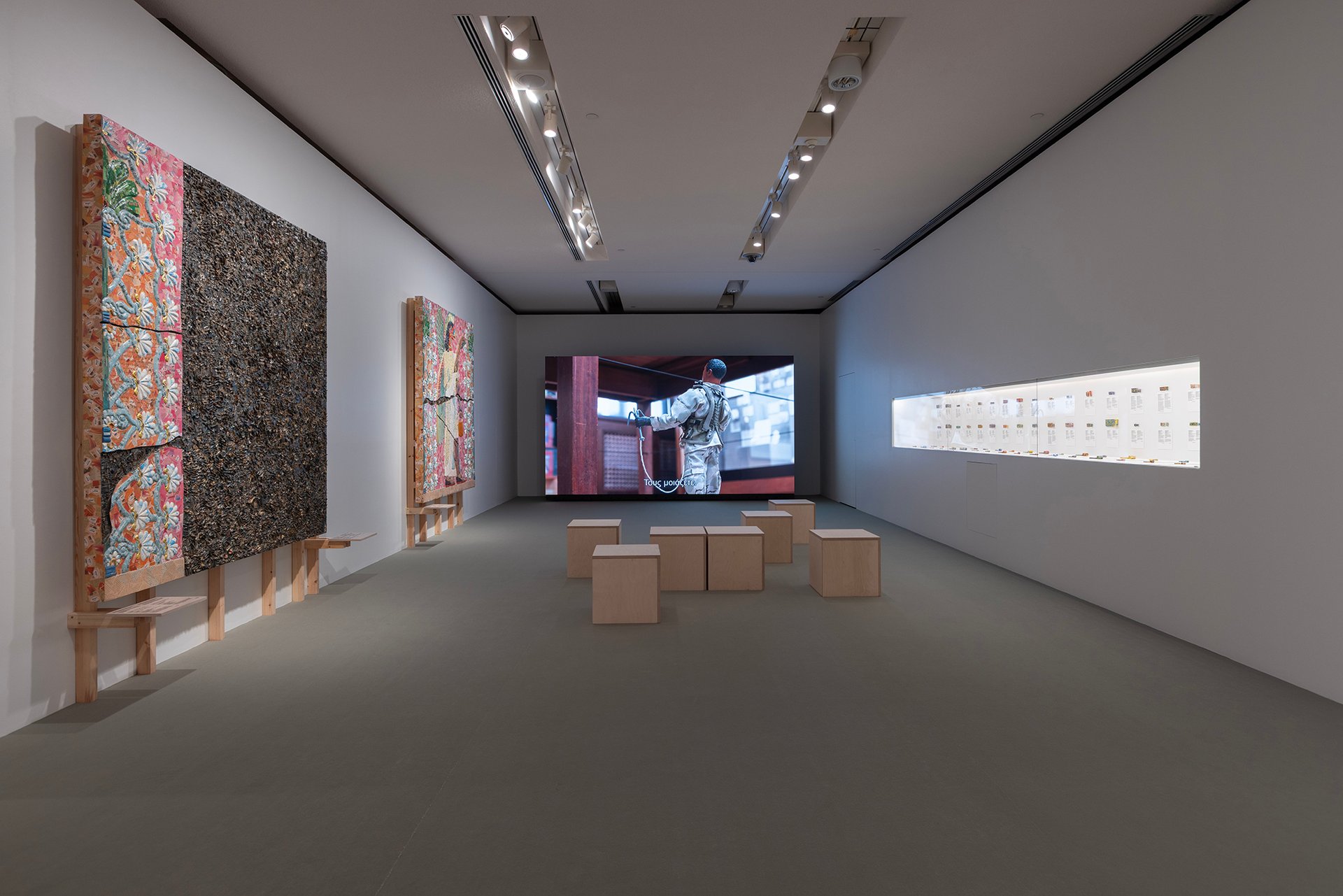
Installation view of Allspice | Michael Rakowitz & Ancient Cultures
Photo: Natalia Tsoukala. Courtesy Νeon, the Acropolis Museum and the artist
Rakowitz said at the opening: “To be able to exhibit my work here leaves me speechless, as it overlaps and connects not only through the past but opens windows into a future where objects and people can be reunited.”
What's next in the series?
This is the artist’s third collaboration with Neon, whose mission is to increase public access to contemporary art and—as its founder Dimitris Daskalopoulostold The Art Newspaper—shake up the “conservatism” of Greece’s public cultural institutions.
The cutting edge installations they have commissioned include a sculpture by British artist Antony Gormley, located in the exterior space of the Archaeological Museum of Delos, which last month became the first contemporary artwork to be permanently exhibited in an archaeological site in Greece.
The second part of Allspice, opening in October, will feature the installation The invisible enemy should not exist/Lamassu of Nineveh (2018)—originally commissioned for the Fourth Plinth in London’s Trafalgar Square—on the western side of the Acropolis Museum. The work comprises a “reappeared” version of a statue of a lamassu that was destroyed by Isis—which the artist has made using empty cans of Iraqi date syrup.
The third installment, opening in May 2026, will be an exhibition at the old Acropolis Museum, which closed in 2007. Rakowitz tells The Art Newspaper that it will explore the historic displacement of Hellenic communities in Asia Minor.
- Allspice | Michael Rakowitz & Ancient Cultures, Acropolis Museum, Athens, until 31 October


